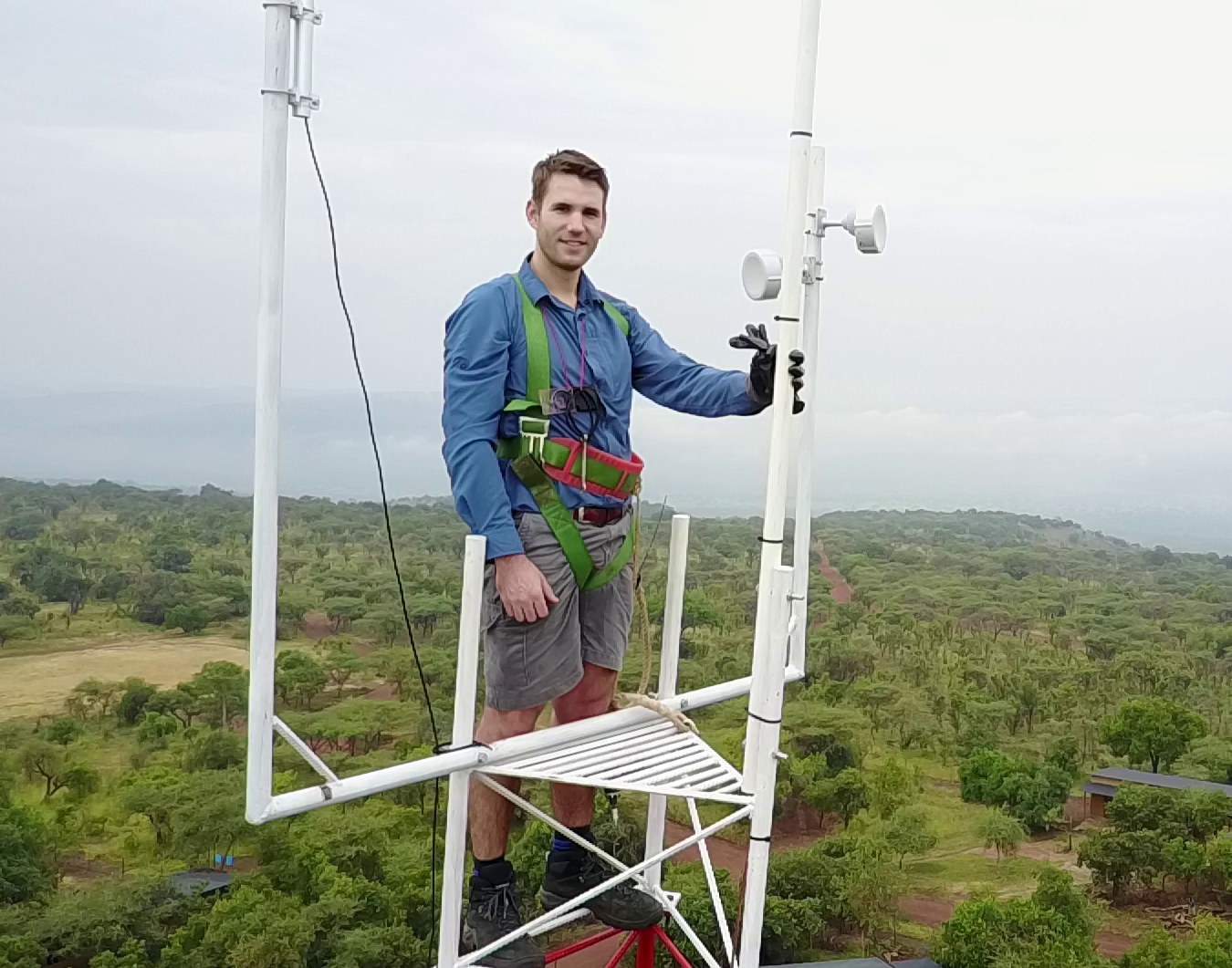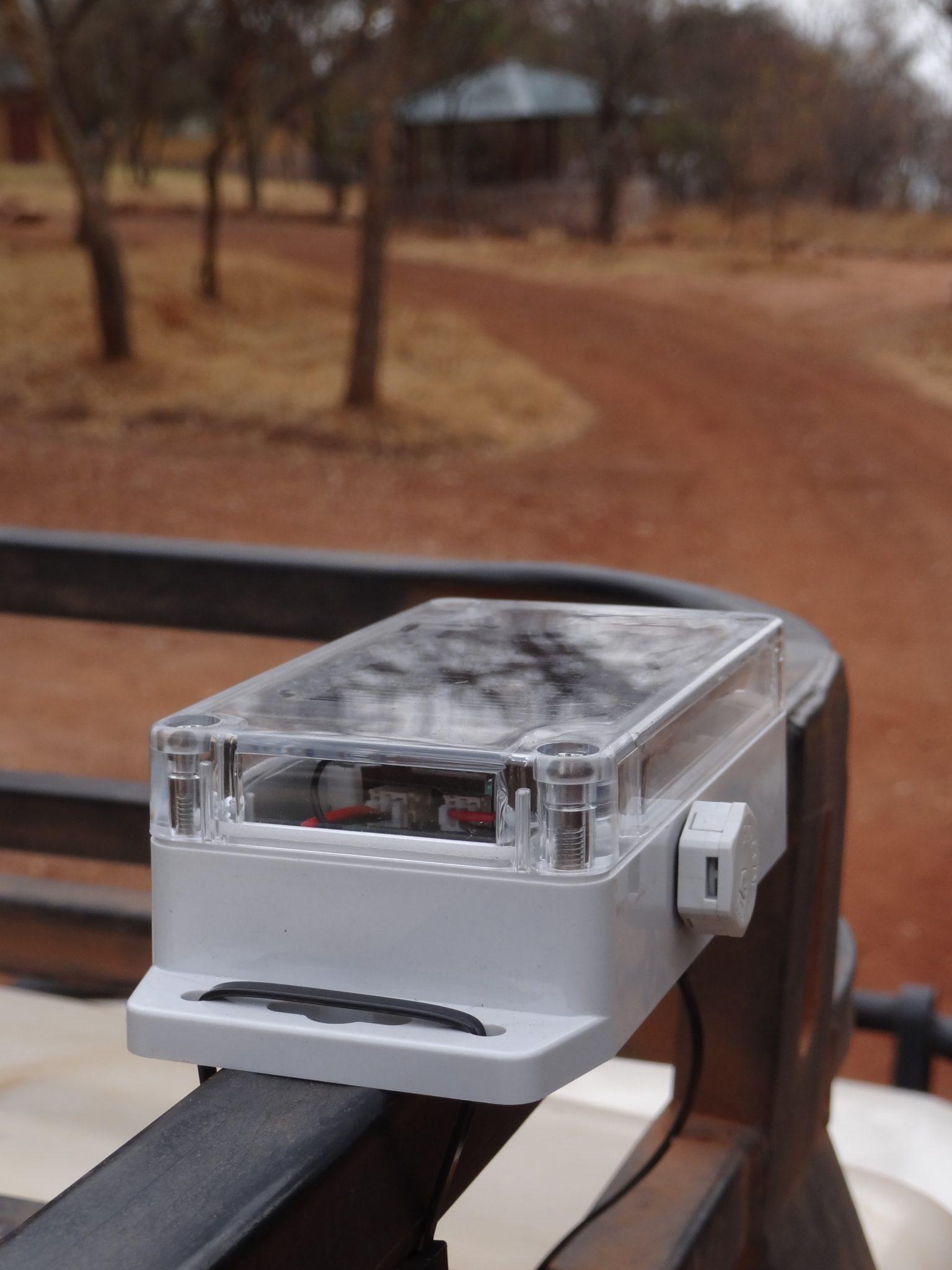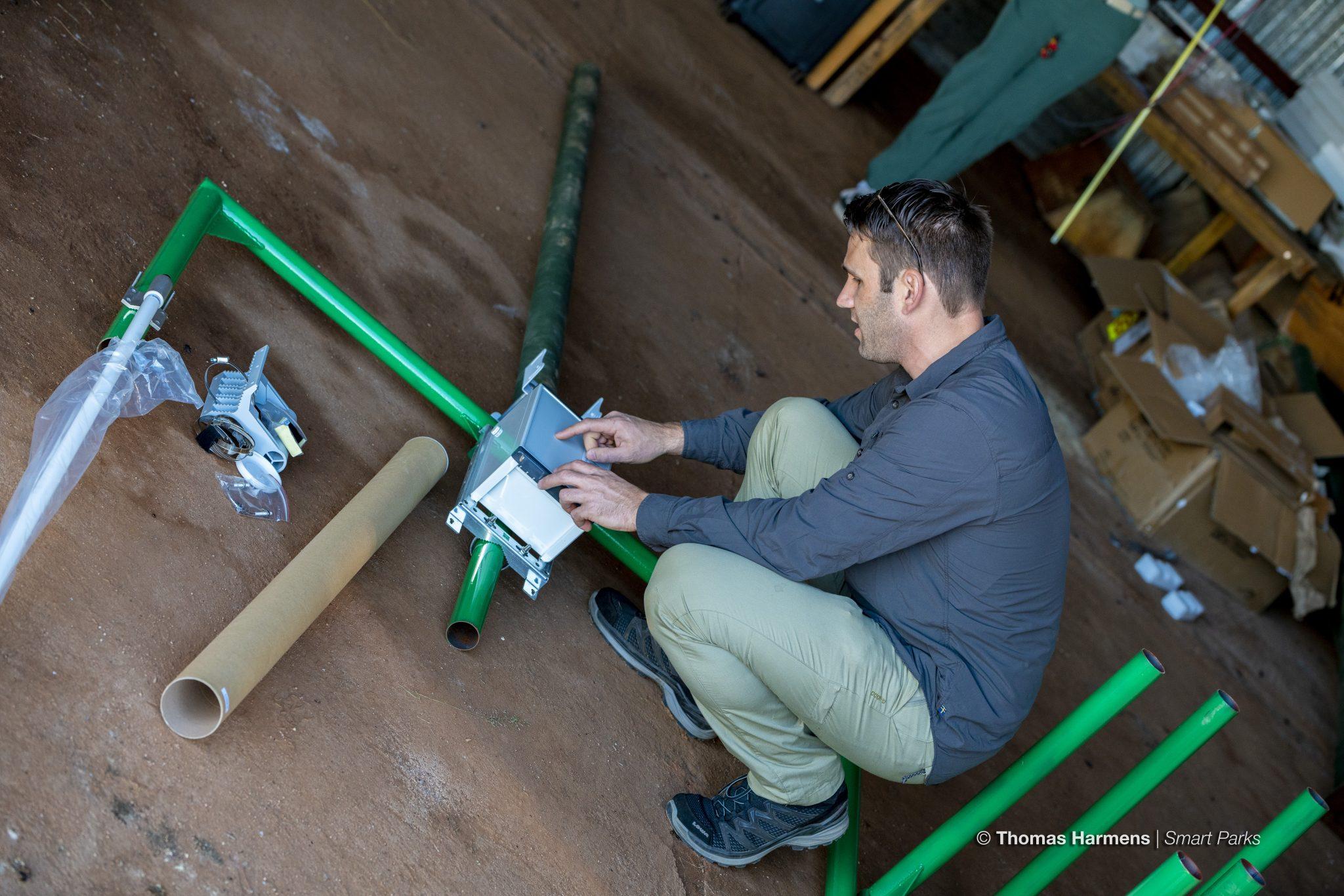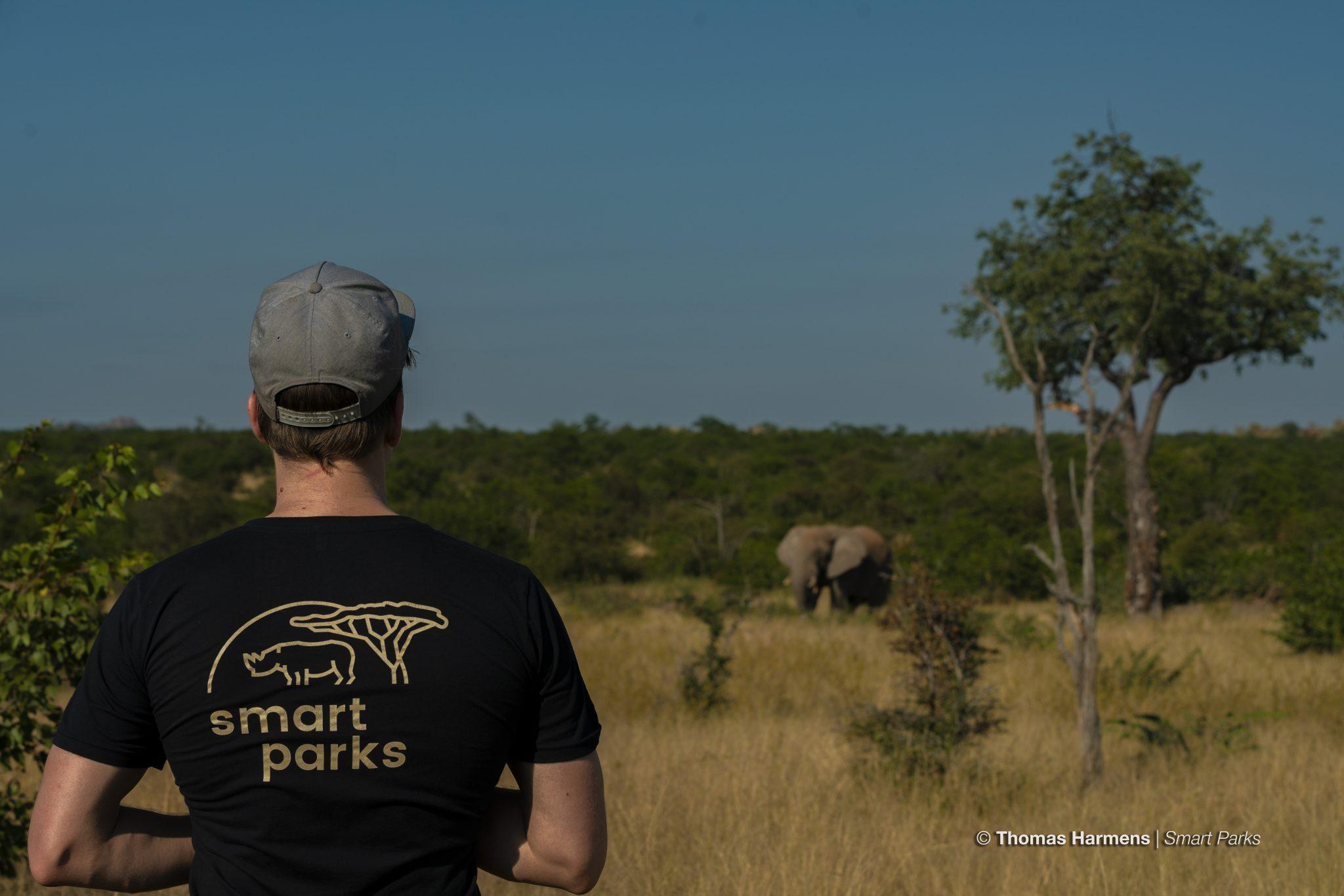Enclosure Expert Interview: Tim van Dam
Tim van Dam is a Senior Business Developer from the Telecom Market and an expert on LoRa-technology and sensor networks. He has worked with the leading telecom provider in the Netherlands, KPN, to develop the first National LoRaWAN IoT networks.
He is a co-founder of Smart Parks, which provides advanced sensor solutions to conserve endangered wildlife and efficiently manage large park areas, and OpenCollar, a conservation collaboration to design, support, and deploy open-source tracking collar hardware and software for environmental and wildlife monitoring projects.
Read on to learn more about Tim's lessons learned from trying to find the right balance for enclosure options in the field.

Can you tell me more about how Smart Parks became part of the LoRa Alliance, which seems to me like a sensor and communication network?
The LoRa Alliance is an alliance of a lot of organizations around the world that are managing and promoting the LoRaWAN standardization.
If you compare it to a protocol like wifi or bluetooth, all those protocols also have alliances that represent the organizations using them. They make sure the standard evolves in a way so that everyone can use it. LoRaWAN is based on the radio frequency standard LoRa, and LoRaWAN is a network standard.
I’ve worked with LoRaWAN since its beginning. I was doing that for a big Telecom operator in the Netherlands, where we were the first company that provided nationwide coverage with this technology. The Netherlands is also the home of the Things Network, an organization which offers LoRaWAN in a community kind of way. It has a broad history in the Netherlands, which is also where Smart Parks is based. We have been active for several years, and I started to focus completely on protecting wildlife with this technology.
If you want to build a LoRaWAN system, you need all types of components like sensors, gateways, and network servers.
In this series, we're considering best practices for designing and choosing enclosures. Do you have any tips on how to circulate air for batteries or other electronics in enclosures?
Some types of batteries may need more air circulation. It also depends on where you put them. If something is in the sun or on the back of an animal, it will need to be treated differently than something inside and in the shade. Different applications require different measures.
For example, if you have a device that has all of your electronics to monitor vehicles or boats with a battery and a solar panel, it works perfectly fine until the sun starts to heat it up. Then, the temperature inside becomes really, really high, and it will damage your battery. For this device, the battery protection mechanism kicks in. But, at the same time, there’s no charging taking place. So it’s really a balance between switching off the battery protection so that charging is taking place, and making sure you are not damaging the battery. For this device, you need the sun for charging, but the sun is also causing the problem because it causes the device to heat up.

In a lot of other projects, we are not using solar or even non-rechargeable, so charging is not a problem. The heating of the battery is still not very good for the battery, but you cannot do anything about it other than making sure that there is some circulation. But in some cases, there is no circulation because the device is on the back of an animal. It’s a combination of knowing the limitations of the technology and knowing what you can influence in a deployment. If you put a sensor on a car, for example, you have way more options than putting something on the back of an animal or even inside a horn.
You preferably keep your batteries nice and clean and cool with air circulating - but you have to find a balance. With some enclosures, there is an air vent, so moisture and heat can get out, and dry air can get in. In some applications, that is not possible.
Do you have any strategies you can share on waterproofing?
"If possible, just use an existing enclosure that has been tested thoroughly in your designs."Tim van Dam
When you need ventilation, you need to put in a vent plug in that has a membrane, letting in air but no moisture. Moisture can only go out. It’s the same membrane like sports jackets, where your sweat can go out but not in.
With everything, you have limitations, and that includes waterproofing. You can design very nice enclosures, but in a lot of cases where you’re working with sensors, which use radio frequency protocols, you need antenna performance. So you cannot do everything, because you may harm the antenna performance. You need to balance everything out. Otherwise, you could put everything in the enclosure, and then everything is 100% watertight - but it also obviously has a downfall, which is antenna performance and more difficulty recycling it.
Repairs are also harder to do because you cannot open it. On the other hand, if you can open something, it’s also easier to tamper with, and harder to make it watertight. Everything has its pros and its cons. You need to go between all these options depending on your use case.
One very important lesson I learned is choosing the right plastics or the right materials for the different applications. For outdoor use in tropical areas or areas with a lot of sun exposure, you need something that will not become brittle or crack. Polycarbonate is better than other hard plastics that get brittle in the sun. If the material gets brittle, the watertightness is gone.
We also work with metals. Our elephant collars are made of treated aluminum or stainless steel. Material choice depends on the project, application, and if there are any other important factors such as weight limits.
For most enclosures that are reopenable, you are using O-rings and enough mechanical pressure so that the O-rings are actually sealing. If possible, just use an existing enclosure that has been tested thoroughly in your designs. If not, you have to deal with these tradeoffs.
Are most of the materials you work with typically imported or sourced locally?
Mostly, we get everything in the Netherlands where the channels are pretty open, so it’s easier to source. Then we take it to Africa or India. Even if you tried to source locally, most of it is imported. We’re living in a global market, and these things are high tech, meaning a global supply chain. So it really doesn’t matter if you say locally sourced at the project site or locally sourced in the Netherlands, because in both situations it will come from the same global supply chains.
What would say the biggest challenge has been when you’re working on enclosure design?
Finding the right setup for your situation. That is really based on the parameters previously described.

Price can also be a problem. You can design something in titanium, for example, but it may be too expensive. It’s a very complex, multi-angle issue.
Every situation requires that approach, where there's no single golden enclosure that can cover all use cases. It’s just not possible when you’re dealing with wildlife protection and that type of application. That’s also the reason why a lot of industrial solutions are not suitable for wildlife protection. They don’t survive the heat, or they don’t survive the specific moisture levels, or they don’t perform well because the antenna tuning is not good based on how they are put in the field.
"All in all, you have to be creative."Tim van Dam
Another challenge is cable management. For example, if you need to connect something to a device when it’s enclosed, you need something to connect that. If you also need to make it watertight, that's another challenge. If it’s possible, you don’t make external connections at all. If it’s needed, we have some strategies there: If you can, use existing, well-defined solutions. We found out there are not many existing connectors that are affordable enough, that can integrate well, and are easy to use and easy to repair. You have to be a bit creative there. All in all, you have to be creative.
For big networking equipment like batteries, gateways, and switches, it’s the same-- just on a bigger scale. There’s no difference. There, you have standard options. It’s not very hard to find good cabinets, which have everything. If you go for cheap, you get lower quality. We source from the global supply chain and find very high quality boxes, which are produced en masse, so they are not very expensive. They’re lightweight, and they’re 100% watertight. You just have to follow the industrial solutions and be a bit creative. For example, if you want to mount something in a bigger cabinet, using concepts like a DIN rail is really standard. So if you just stick to those standards, it becomes really easy to mount things inside such a cabinet.

In coming up with designs, are there any resources you recommend, or anything that’s helped you learn more about designs, be more creative?
Google your butt off! Everything is out there. Just try to use your own brain and search for clues about how other people did this. Use pictures and try to put things together.
The main source of information is actually going into the field and looking around and taking pictures of things around you where you think, “Ah, this is smart.” Find the brand and you can Google that. Follow that lead, and you can usually get to the source of where these things are coming from. Just look around you.
There’s good infrastructure everywhere. There’s also bad infrastructure everywhere. There’s no magic guide here, I guess. Everybody is also designing in their own way. It’s quite easy to see what is good and what is bad. Just follow some examples, and go with that.
--------
Thanks to Tim van Dam for sharing his expertise with us.
To learn more about this topic, download the best practices booklet exploring Ashley's work to design an effective conservation tech enclosure based on the lessons learned by enclosure experts.



Add the first post in this thread.